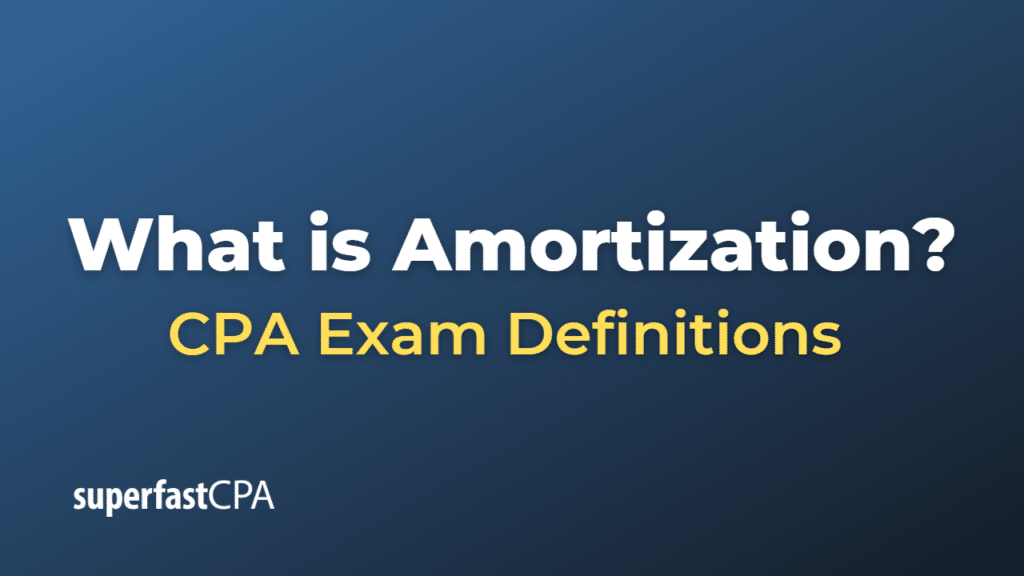Amortization
Amortization is the process of gradually reducing a debt or the value of an intangible asset over a specific period of time through regular payments. In accounting and finance, amortization can refer to two main situations:
- Loan Amortization: In the context of loans, amortization refers to the process of paying off a debt (such as a mortgage or a car loan) over time through regular, fixed payments. Each payment consists of both principal and interest portions. Initially, the interest component is larger, but as the principal balance decreases, the interest portion of the payment declines, and the principal portion increases.
- Amortization of Intangible Assets: In accounting, amortization also refers to the systematic allocation of the cost of an intangible asset (such as a patent, copyright, or trademark) over its useful life. This process is similar to depreciation, which allocates the cost of tangible assets (like machinery and equipment) over their useful lives. The purpose of amortizing intangible assets is to match the expense recognition with the revenue generated by the asset, following the matching principle in accounting.
In both cases, amortization results in the gradual reduction of a liability or the value of an asset over time, spreading the cost or the repayment across multiple periods.
Example of Amortization
I’ll provide examples for both loan amortization and amortization of intangible assets.
- Loan Amortization Example:
Suppose you take out a $200,000 mortgage loan with a 4% annual interest rate and a 30-year term. The monthly payment would be $954.83. In the early years of the loan, the majority of the payment goes towards interest, and as time goes on, the payment is increasingly applied to the principal.
Here’s a breakdown of the first three payments:
Payment 1:
- Interest: $666.67 (200,000 x 0.04 / 12)
- Principal: $288.16 (954.83 – 666.67)
- Remaining balance: $199,711.84 (200,000 – 288.16)
Payment 2:
- Interest: $665.71 (199,711.84 x 0.04 / 12)
- Principal: $289.12 (954.83 – 665.71)
- Remaining balance: $199,422.72 (199,711.84 – 289.12)
Payment 3:
- Interest: $664.74 (199,422.72 x 0.04 / 12)
- Principal: $290.09 (954.83 – 664.74)
- Remaining balance: $199,132.63 (199,422.72 – 290.09)
Over time, the interest portion of the payment decreases, and the principal portion increases until the loan is completely paid off.
- Amortization of Intangible Assets Example:
Suppose a company acquires a patent for $50,000, and the patent has a useful life of 10 years. The company would amortize the patent’s cost over its useful life.
Annual Amortization Expense = Cost of the Patent / Useful Life Annual Amortization Expense = $50,000 / 10 years Annual Amortization Expense = $5,000
Each year, the company would record a $5,000 amortization expense, reducing the value of the patent on the balance sheet. After 10 years, the patent’s value would be fully amortized, and its carrying value on the balance sheet would be zero.













